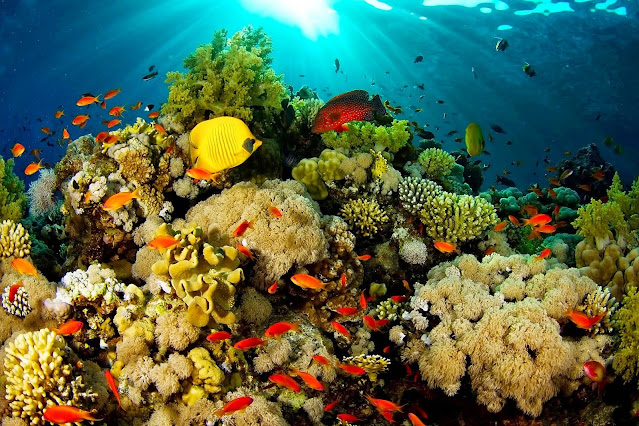Indonesia Focuses on Deep-Sea Research to Unlock Economic Potential
pada tanggal
21 Desember 2023
JAYAPURA, LELEMUKU.COM - Deep-sea research is unveiling a wealth of knowledge aimed at tapping into its economic potential while also preserving its ecosystem from damage or extinction. Indonesia, being a maritime nation with two-thirds or 77 percent of its total area consisting of water, is spearheading efforts to explore and understand the depths of its vast marine resources.
According to data from the National Research and Innovation Agency (BRIN), out of Indonesia's total 6.4 million square kilometers of water, approximately 4.4 million square kilometers are deep-sea, and the remaining 2 million square kilometers are shallow waters.
This implies that 68 percent of Indonesia's maritime territory consists of deep-sea areas, reaching a minimum depth of 2,000 meters below the surface.
Despite the economic potential being equally enticing, deep-sea exploration faces challenges due to the lack of light penetrating depths up to 2,000 meters, coupled with high pressure reaching up to 11,000 pounds per square inch (PSI), as acknowledged by Indah Suci Nurhati, Head of the Center for Deep-Sea Research at BRIN.
These conditions have led to limited research activities in these areas. Currently, Indonesia faces constraints in terms of equipment and access to reach deep-sea regions, resulting in the limited exploration of discoveries in these remote waters.
In response to this, BRIN has established the Center for Deep-Sea Research under the Earth and Maritime Research Organization. The aim of deep-sea research is to understand, utilize, and conserve the potential biodiversity in the deep sea, according to Indah Suci, as quoted by Antara.
Through deep-sea research, a wealth of knowledge can be acquired to explore the economic potential that can be developed. This includes efforts to safeguard the ecosystem from deterioration or extinction.
Many enzymes remain undiscovered in the deep sea, with some of the biodiversity in these extreme regions producing enzymes essential for food, health, and pharmaceutical development.
Therefore, the BRIN Deep-Sea Research Center conducts research to monitor various aspects. First, research on the environment to understand the dynamics of life in the deep sea, including current patterns, pressure, and other factors.
Second, research on deep-sea bioprospecting involves scientific efforts to seek and explore local biological and genetic sources. The goal is to turn biodiversity into commercial products, including the exploration and utilization of hydrothermal vent locations and unique and extreme environmental sites.
Third, research on the connectivity between the deep sea, coastal areas, and the land, which have interconnected and mutually influential relationships. To conduct deep-sea research, technological support is crucial to facilitate the collection of data samples.
"Changes that occur in the deep sea come from the surface, such as from the coast, so the problems in the deep sea cannot be separated from the pollution that occurs on the coast and the land, including the presence of, for example, plastic that damages the deep-sea ecosystem," explained Indah Suci.
Specialized equipment is required for deep-sea research. BRIN itself has a fleet of research vessels used for oceanography voyages. Therefore, it is hoped that investments will be made so that research vessels can deploy equipment such as cameras to collect deep-sea data.
"We hope that investments in research vessels can go beyond that, so in the future, research vessels can deploy equipment such as cameras to collect deep-sea data. With the technology of tools and cameras to observe life in the deep sea, we can gain a different perspective than bringing deep-sea biodiversity to the surface," she said.
Meanwhile, Ocky Karna Radjasa, Head of the Earth and Maritime Research Organization at BRIN, stated that the deep sea holds vast potential in terms of natural resources. This includes biodiversity at micro, macro, and molecular scales, as well as barophilic biodiversity capable of surviving in extreme conditions.
Furthermore, it encompasses future food and medicine supplements and economic mineral deposits. "Exploration also needs to be carried out for further utilization of deep-sea biodiversity resources and sustainable deep-sea mining exploration to determine potential hazards," he added. (Setpres)
Simak berbagai berita pilihan dan terkini dari Lelemuku.com selain "" di Grup Telegram Lelemuku.com. Klik link https://t.me/lelemukucom kemudian join/bergabung. Pastikan Anda sudah menginstall aplikasi Telegram di ponsel.












%202025.jpg)



